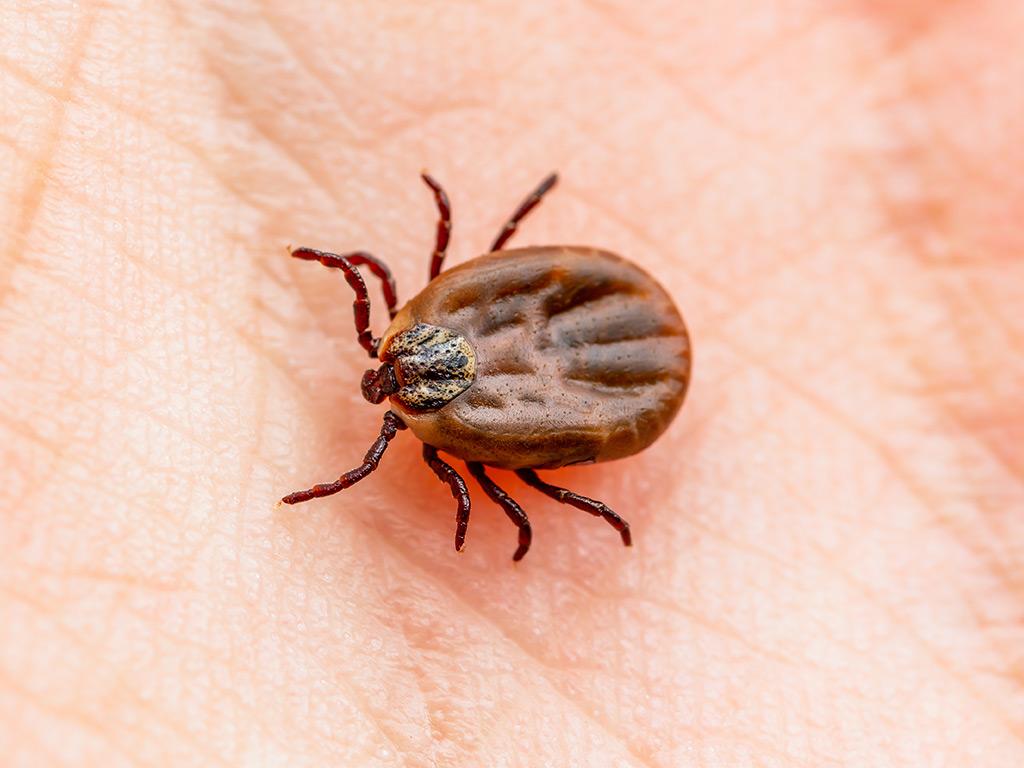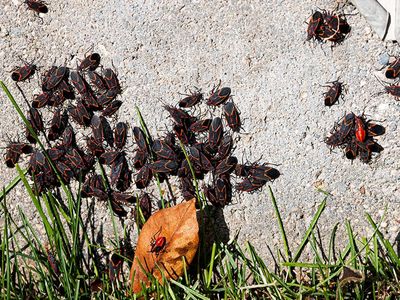What do deer ticks look like?
Deer ticks, also known as blacklegged ticks, go through several stages in their life cycle. They start as seed ticks, which are tiny and only have six legs. These young ticks are small enough to balance on the tip of a pencil! As they mature into adults, they develop an additional set of legs, bringing their total to eight. When fully grown, deer ticks are about ⅛ inch in length. Their bodies are reddish-brown, with black legs. Male ticks are entirely black, while females have a black oval near their head and reddish-brown coloring on the rest of their bodies.

Why are they called deer ticks?
These ticks are often called deer ticks because white-tailed deer are their primary hosts and play a significant role in spreading them. However, deer aren't the only ones they feed on. Deer ticks also hitch rides on smaller animals like mice and even birds!
Are deer tick bites dangerous?
Yes, deer ticks can be dangerous. While not every tick bite leads to an infection, ticks that are infected can transmit serious diseases. Here are a few that this tick species can spread:
- Lyme Disease: These ticks are the main carriers of Lyme disease, which can cause long-term health issues if left untreated.
- Anaplasmosis: An infectious disease transmitted by ticks carrying the bacteria Anaplasma phagocytophilum, which survives and reproduces in white blood cells.
- Babesiosis: This parasitic infection attacks red blood cells and can cause flu-like symptoms, which can be dangerous for some people.
- Powassan Virus: Though rare, this viral infection can lead to encephalitis, which is brain inflammation and can be life-threatening.
Other diseases spread by these ticks include Rocky Mountain spotted fever, Borrelia miyamotoi, ehrlichiosis, and tularemia. For more information on tick-borne diseases, the Commonwealth of Pennsylvania's website is a great resource.
Are Lyme disease and other tick-borne diseases common in Pennsylvania?
Yes, Pennsylvania's wooded areas and humid climate make it an ideal environment for ticks to thrive. This increases the risk of tick-borne diseases for residents in places like Scranton, Wilkes-Barre, and surrounding areas.
Where do ticks hide?
Ticks tend to hide in humid vegetation like tall grass, bushes, and shrubs. They climb up plants and wait for an animal (or person) to brush by so they can latch on. You’ll also find them in dark, secluded spots such as areas where animals sleep or nest.
How do I protect my pets from ticks?
To protect your pets from deer ticks, consider using a vet-approved tick preventative. Regular grooming and checking your pets for ticks after outdoor adventures are important steps. Additionally, keeping your yard tidy, trimming the lawn, and discouraging wildlife that carries ticks (like rodents) will help keep ticks away from your pets.
How do I get rid of deer ticks on my property?
If you’re dealing with deer ticks, consider contacting a pest control expert like Evergreen Pest Solutions. Our seasonal mosquito control services target not only mosquitoes but also deer ticks and fleas. We offer monthly treatments from April to October to ensure your yard is protected from these biting pests and the diseases they carry.
How can I prevent ticks?
Along with protecting your pets and signing up for tick control, here are a few tips to keep ticks at bay:
- Regularly mow your lawn to keep grass short and less appealing to ticks.
- Clear away dense vegetation and brush where ticks might hide.
- Remove leaf litter and other debris from your yard.
- Trim trees and shrubs away from walkways and play areas.
- Avoid placing outdoor furniture near wooded areas or dense vegetation.








